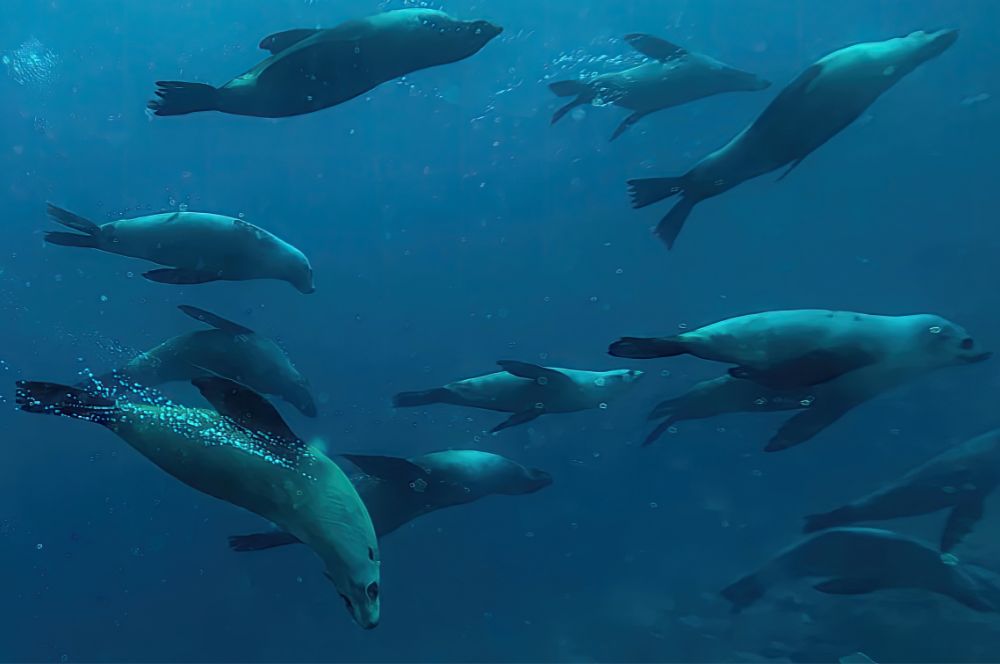You have 0 product(s) in your cart.
Abyss Scuba Diving

Australian Fur Seals are called fur seals because of the amount of fur they have to protect them against the elements.
Fur seals have an outer coat of long, coarse guard hairs that protect a dense underfur which traps air to waterproof and insulate the seal from the cold. When seals swim their fur presses down making them streamlined and quick swimmers.
Seals also have a layer of fat to assist with warmth and streamlining. Blubber helps insulate seals in any cool or polar conditions. True seals rely on that layer of blubber more than fur seals because true seals live more aquatic lives. Fur seals depend more on their special under-fur to regulate their body temperature as well as other bodily adaptations.
In cold temperatures, seals conserve heat by keeping the warm blood in their body away from the cooler external environment, they do this by making peripheral blood vessels constrict, while insulating blubber reduces heat loss.
The Seals hind flippers have these peripheral blood vessels close to the skin and only a few deep blood vessels. When they are cold, seals press their hind flippers together, “pooling” the heat contained in the superficial vessels. These surface vessels then transport this heat to the deeper vessels, which keeps the internal organs warm and functioning properly.
Most mammals use arteries to take blood from the heart to the arterioles and capillary bed. Blood then travels through to veins that return the blood to the lungs, where it’s re-oxygenated.
Seals can skip the capillary bed all together. They can dilate special blood vessels that are near the surface of the skin and bypass the capillary bed, which lets warm blood reach the surface quickly to disperse heat into the environment. That same process also lets seals return cooled blood to their internal body for more heat extraction… and back to the surface for more cooling, and so on.
Sea lions and fur seals however are still particularly sensitive to heat. When the outside temperature reaches 30°C, they are unable to maintain a stable internal temperature so they seek shade, or remain inactive. When the heat becomes too hot, they enter the water to cool off and you can see them with a flipper raised in the air, catching the breeze. The inability to properly dissipate heat makes these seals vulnerable to heat-related illness.
Seals use other tricks to keep cool, such as covering up with damp sand.
Ever see a completely hairless seal? Probably not, since even a little fur helps keep protect them from the cold and water. All seals molt to replace their old fur with new fur, though they never lose all their fur at once.
A seal’s blubber can also help to insulate the animal’s internal organs without fighting to keep the exposed skin warm. All the energy is used to protect the seal’s critical organs, like its heart and brain. A seal’s core body temperature is around 38 degrees C so not far from our own internal temperatures.
Recent Posts






